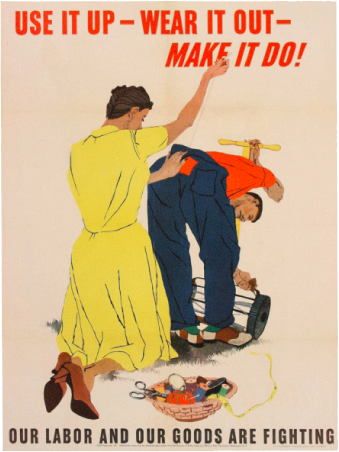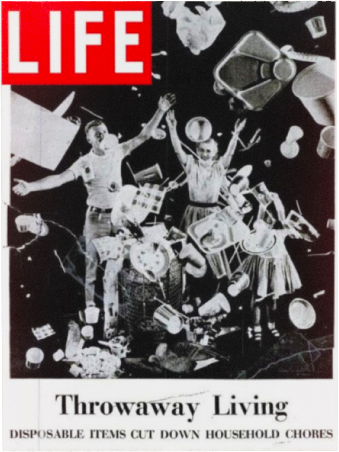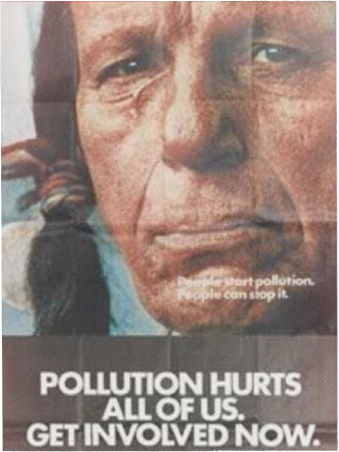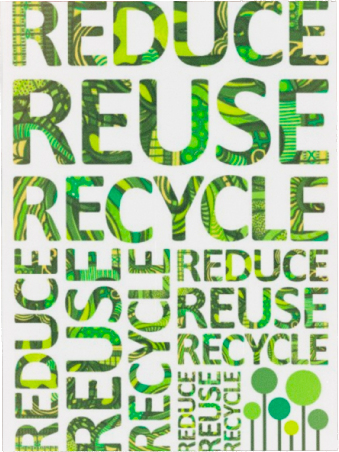Old Dogs, New Tricks
Do you think recycling is the best thing you can do for the environment? Probably not. But the majority of people we poll do think that — because that’s the message companies have pushed for decades.
It’s rewarding for sustainability communicators to know messaging works. But in this case, it’s a problem for consumer goods makers.
The promise made via messaging is, “Don’t feel bad about all the stuff you buy — just recycle it!” People had bought into that promise big-time. Until now.
Our new infographic illustrates why messaging needs to come full circle — and how companies can stay relevant to today’s consumers.
We need to change behaviors around consumption and waste - before people give up on recycling.
Over the last 80 years, we've used messaging to drive new behaviors around consumption and waste.

1950s-1960s
"Use it up and wear it out" for the war effort

1940s
"Buy what you want and throw it away."

1970s
"Don't litter"

1980s-1990s
"Reduce, reuse, and recycle"

2000s
"Recycle" - the other R's have faded
And it worked.
People took our recycling message to heart.
95%
of Americans think recycling helps the environment.
75%
say it's the best way to help our planet.
76% of Americans say recycling makes them feel better about buying stuff.
But that get-out-of-guilt-free promise is starting to break down.
49%
of Americans say the recycling system isn't working well.
30%
aren't confident their recyclables are being recycled (up from 14% in 2019).
After all, 42% want to be seen as someone who's buying eco-friendly products.
If their stuff is really being landfilled...
the problem just got personal.
Americans are looking for new ways to purchase - without waste on their consciences.
That makes NOW the time to come full circle.
Use it up and wear it out

It's up to brands to provide new circular solutions - and roll out the right messaging to change behaviors.
What's your brand doing to teach
